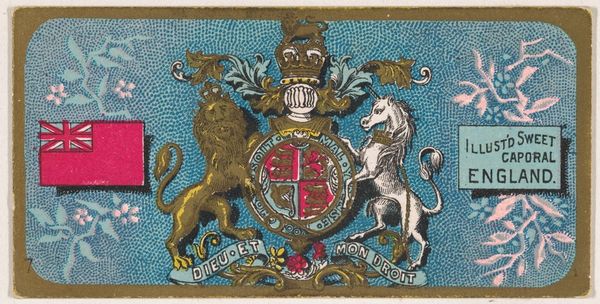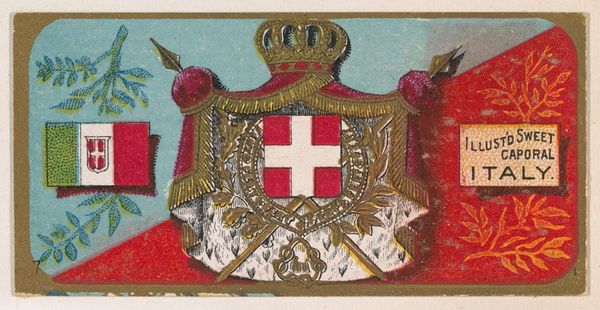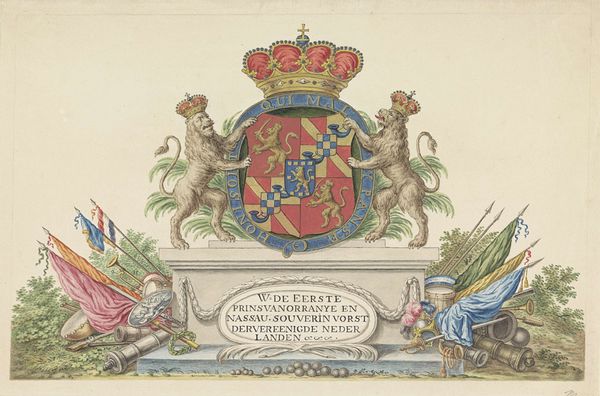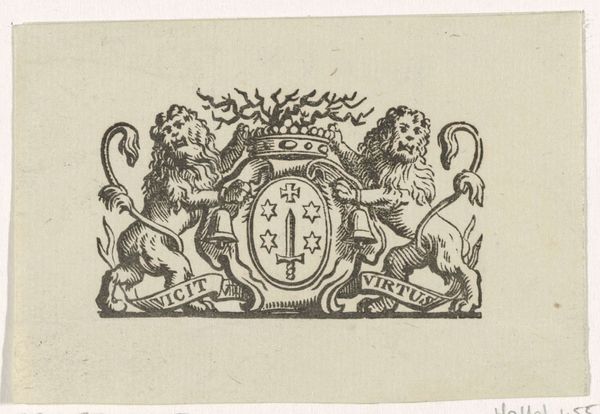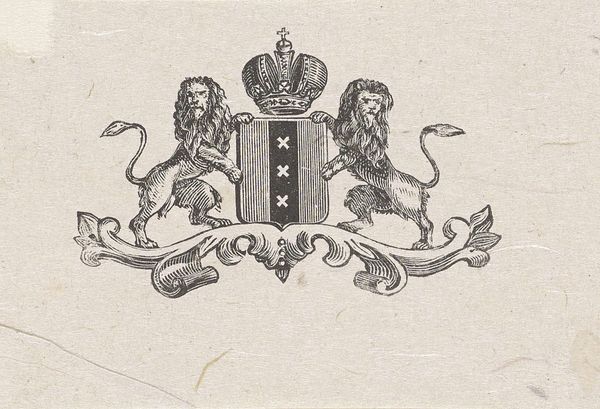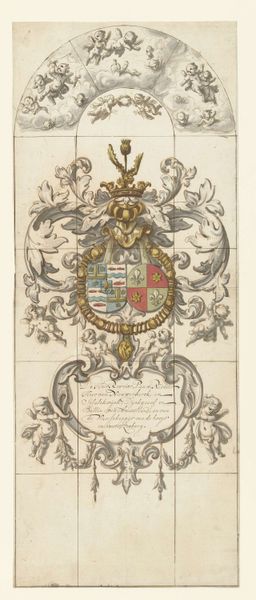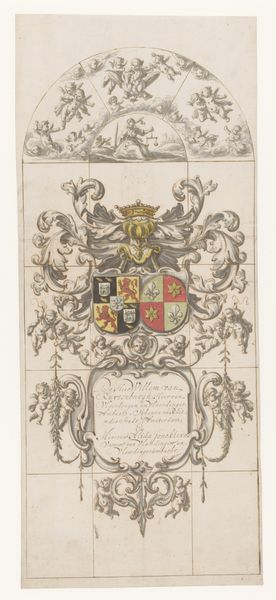
Coat of Arms, Belgium, from the Military Series (N224) issued by Kinney Tobacco Company to promote Sweet Caporal Cigarettes 1888
0:00
0:00
drawing, graphic-art, collage, lithograph, print, etching, paper, engraving
#
drawing
#
graphic-art
#
collage
#
water colours
#
lithograph
# print
#
etching
#
appropriation
#
neo-impressionism
#
paper
#
naive art
#
symbolism
#
engraving
Dimensions: Sheet: 1 1/2 × 2 3/4 in. (3.8 × 7 cm)
Copyright: Public Domain
Editor: This small lithograph from 1888 depicts the Coat of Arms for Belgium. It was actually a promotional item for Sweet Caporal Cigarettes made by Kinney Tobacco Company. The color palette is muted, almost pastel, and I find it charmingly naive in its execution. What historical context is important here? Curator: It's fascinating how these seemingly innocuous commercial objects reflect broader historical narratives. Kinney Tobacco's "Military Series" participated in a late 19th-century trend of using national symbols to promote consumer goods. This card is not simply about selling cigarettes, but about aligning the brand with ideas of nationhood, strength, and even imperial ambition. Consider, why Belgium, a relatively new nation at the time, and what visual cues does it deploy to convey power? Editor: The lion rampant is quite prominent, a traditional symbol of strength and courage, but what’s more to know? Also the phrase "L'Union Fait la Force"... I imagine it says "strength in unity?" Curator: Exactly. It underscores the importance of national unity, a key theme for Belgium, which had only gained its independence in 1830. The choice of French, alongside Flemish, the nation's two primary languages, is telling. Do you think Kinney Tobacco cared so much about the unity of Belgium? Or, who in America did it concern? Editor: Perhaps targeting immigrant communities, and reminding them of "home?" The text is also a form of advertising in itself. Curator: Precisely! The card functioned as a cultural ambassador, introducing a romanticized vision of Belgium to American consumers, while simultaneously boosting Kinney's brand recognition among Belgian immigrants. Consider also the colonial context of this period. What claims does Belgium make overseas at the time of the lithograph creation? Editor: Right, King Leopold II and the Congo Free State… that’s quite a stark contrast to the "naive art" style and sweet colours. I learned to always think beyond what is shown in the image, toward what message it's conveying about nationhood and commerce. Curator: And those hidden socio-political tensions within a seemingly simple collectible! It demonstrates how popular culture actively participated in shaping national identities and supporting colonial agendas.
Comments
No comments
Be the first to comment and join the conversation on the ultimate creative platform.
